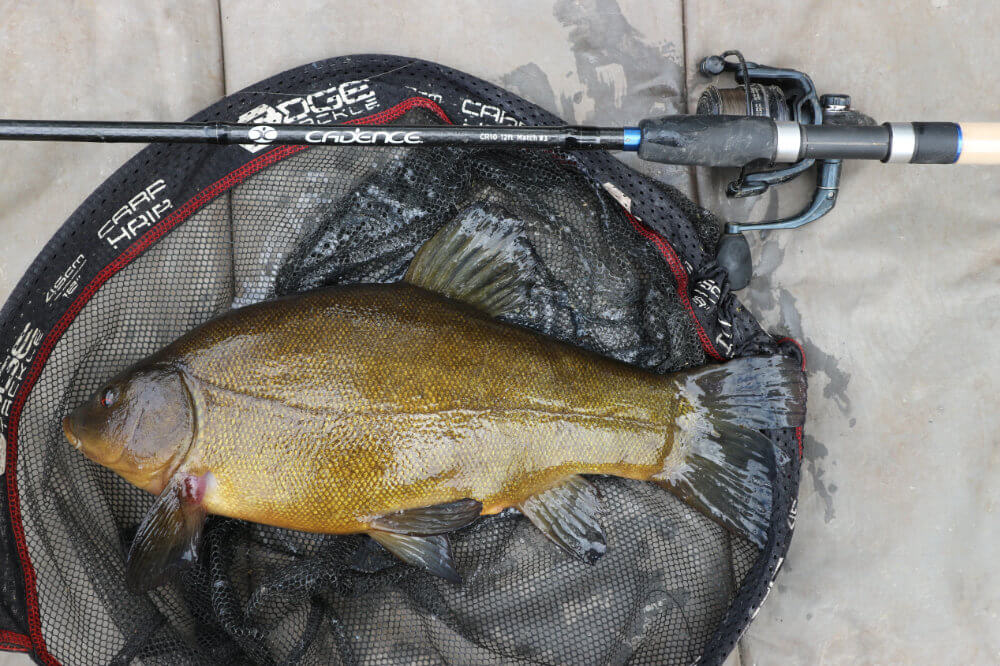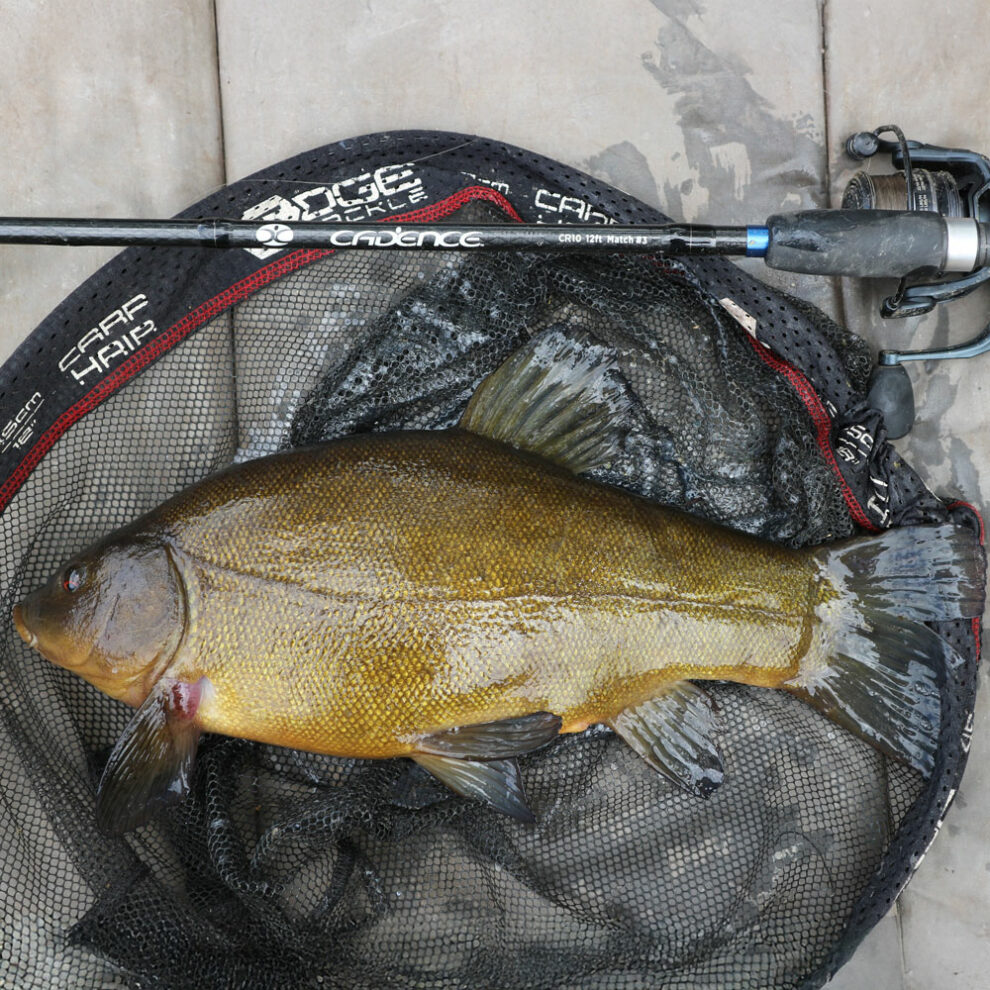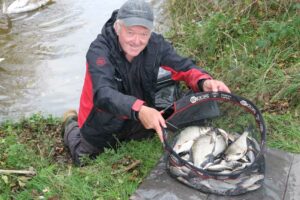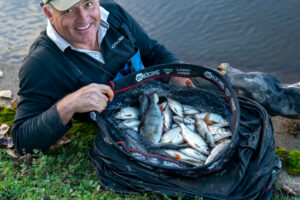Finding Them
Lakes dotted with overhanging willows, shady bays and lily beds are often associated with tench. It’s well documented that early starts are likely to uncover this species, along with evening sessions when they switch on the feed again. However, tench can still be caught in normal daylight hours, providing some guile is employed. I’ve done early and late stints, when these fish are easier to fool, but didn’t enjoy it. I much prefer a more sensible office hours type challenge. I also leave exclusive estate venues to others, seeking tench in more accessible places like club or day ticket lakes, drains, gravel pits, canals, and some rivers. Occasionally, these fish are resident in venues you think you know well, but only rarely turn up. This can be due to concentrating on areas where they don’t go, or using baits they largely ignore.
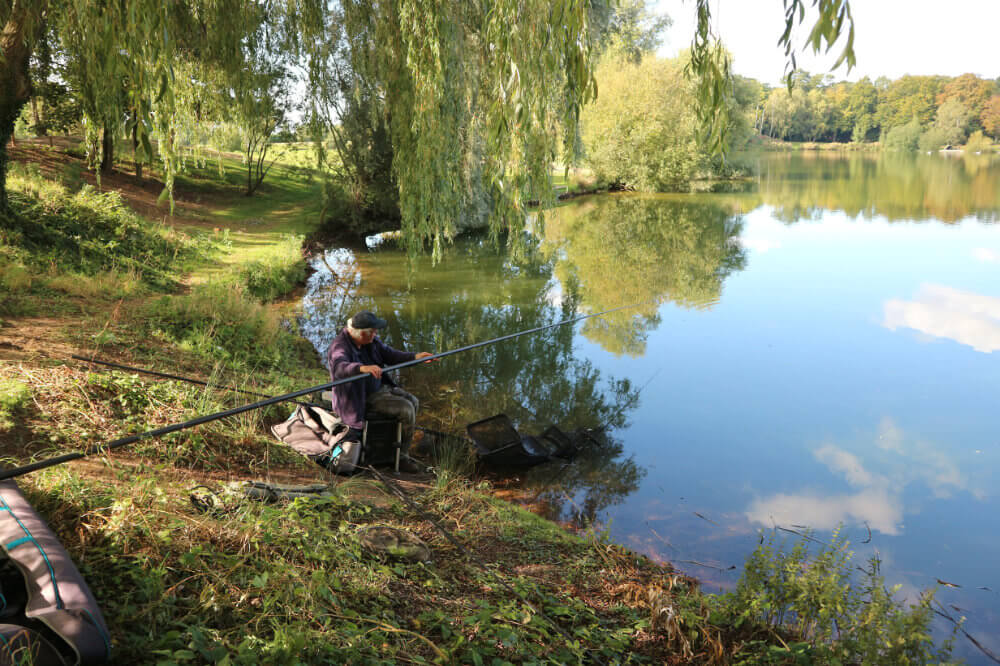
The Margins
A top place to locate tench is down the margins, where this species loves to patrol and root about for food. That was certainly the case in an old brick pit I used to visit, which was stuffed with small rudd and choked with weed. This made close in work the best option. Once some feed had gone in, the tench would quickly fizz lots of bubbles over it, but that didn’t always guarantee catching them. Teaming shoals of rudd would muscle in, making it difficult to get baits to the bottom without them being mauled to bits. Anything small and delicate like maggots, casters or pieces of worm was generally a waste of time, unless you preferred catching 2oz silvers all day. I did try that once, but still couldn’t get through the endless bits. You needed to find something you could get down hard on the bottom, then play a waiting game.
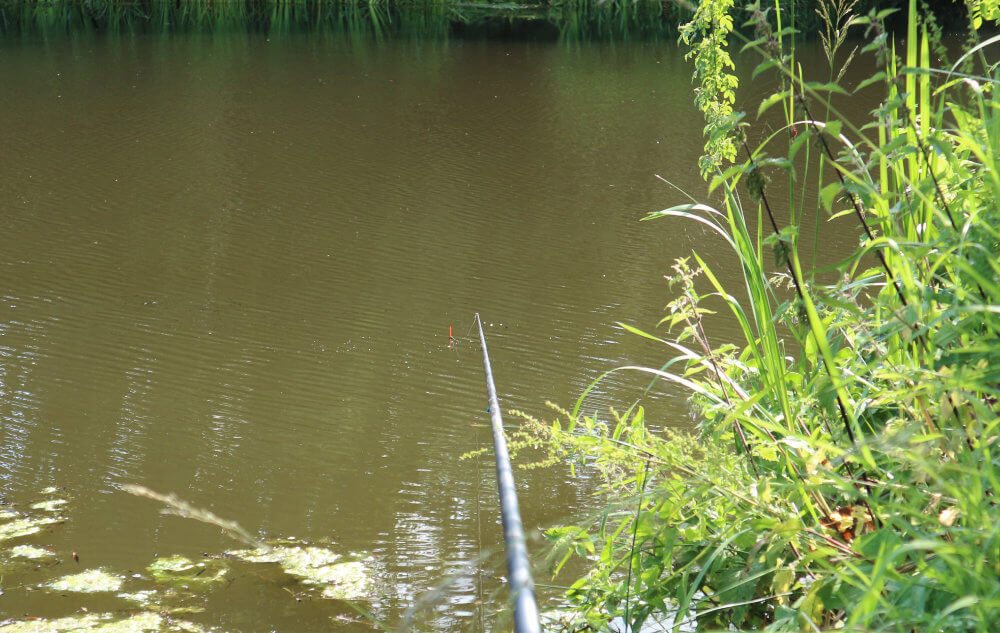
Bait Choices
A lot of my early tench fishing took place on gravel pits around London, where I discovered red Expo Groundbait from Van Den Eynde worked a treat. Maintaining that colour theme, I moved onto using red krill pellets and closely related orange krill groundbait, which again tench seem to love. Green emerged as another good colour with groundbaits, such as Dynamite Swim Stim and Bait-Tech Super G Green, both of which make highly effective pastes. A tench attack that scores particularly well for me is using krill groundbait and pellets, adding plenty of casters. I first tried cupping this mix in hard ball form down the margins with my Cadence CP800 Margin Pole, but wasn’t always sure where everything ended up. I wondered if some feed rolled further out than expected, so changed to carpet feeding in loose form, which brought a better response.
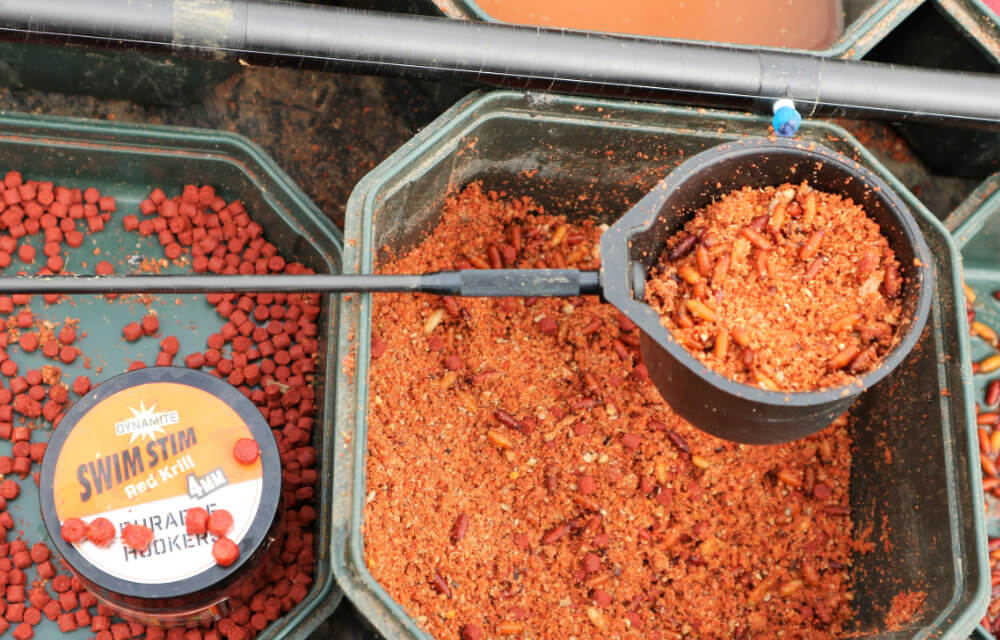
Stepping Up
Many tench venues I visit are shallow and silty, so cupping in loose groundbait, along with pellets and casters, doesn’t make much difference compared to balling in. Both methods attract hordes of tiny rudd, roach and perch, requiring bigger and more regular amounts of feed to eventually pull in the target species. To beat the bits, I’ve enjoyed success with large paste offerings and by using pellets. Both ways resulted in catching higher numbers of tench, rather than the occasional bonus ones that previous methods, such as battling a way through the small stuff with maggots, worm and casters, used to bring. Particularly potent baits have been directly hooked soft pellets, or banded hard ones, both closely related to the type of groundbait being used. Crafty tench often suck these in when hoovering up similar smaller particles.
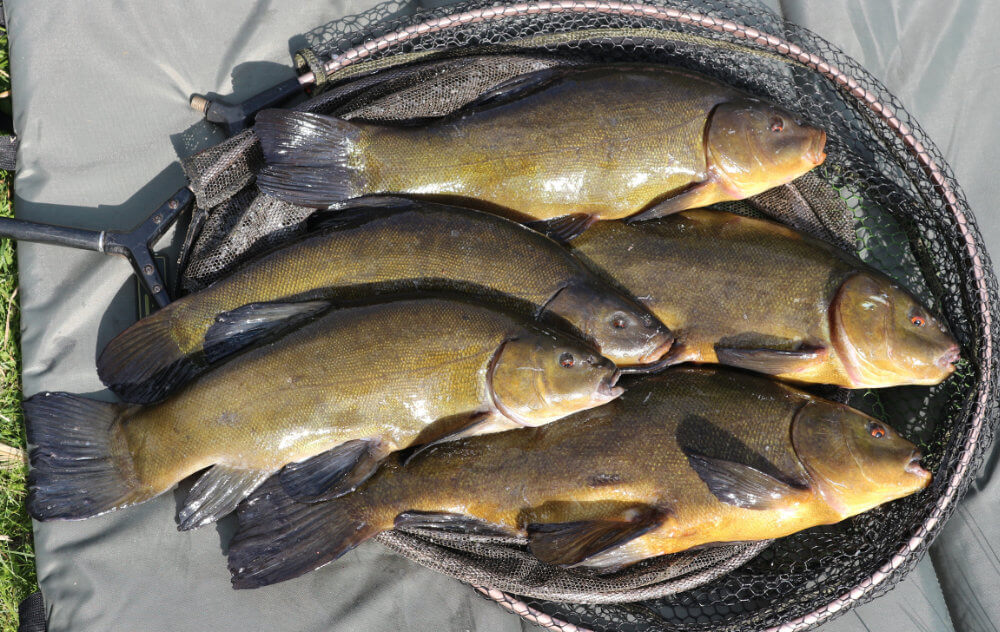
Beating Weed
Feeder fishing can be highly effective for tench. In weedy venues, window designs can work well, helping to reduce rigs getting clogged up all day. These are more streamlined and, thanks to their base weights, don’t tend to snag up quite so easily, rather than side lead models. Because this type of feeder deposits its loadings very tightly, short hook lengths are normally most efficient at gaining interest. Bright baits like sweetcorn or wafters also help here when casting into heavily weeded areas, which tench love to inhabit. You need to use a powerful feeder rod for this approach, something with enough backbone to handle heaps of debris initial casts will inevitably drag in, also when lively tench plough into more of the stuff. The Cadence CR10 13ft Distance Feeder rod 3# is ideal, especially when long-range casting is required.
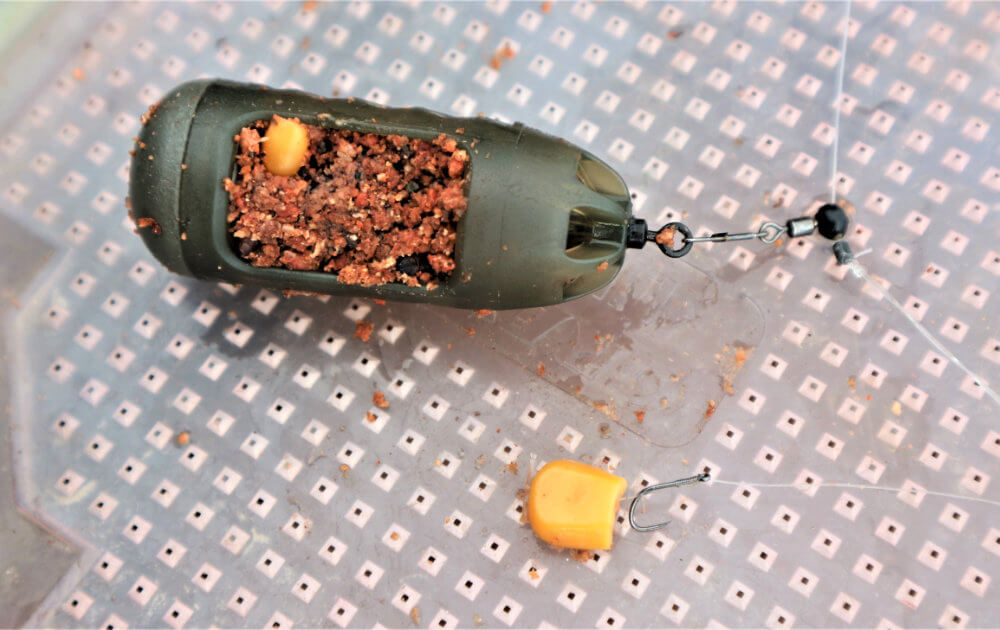
Proper Gear
Since becoming involved with Cadence, I’ve come to appreciate they do some great float rods that can handle big tench. This corker of a fish was landed on a 12ft CR10 Match #3, which although powerful has a lovely action, not being over-gunned for any other species that might turn up. I’ve landed plenty of bonus skimmers on it, along with quality roach, rudd, and perch. The 12ft CR10 Match #2 is also man enough for this demanding type of float work, especially when extracting big fish from weedy swims. I couple these 2-piece rods with Cadence CS10 3000 or CS10 4000 reels, kitted out with 6lb or 8lb Edge Tackle Sinking Mono as main line, along with 4.3lb to 6lb Edge Tackle Premium Mono hook lengths. I’ve not yet struggled with any of this tackle while attached to big tench, which are masters at finding any weaknesses in your gear, always giving it a thorough workout.
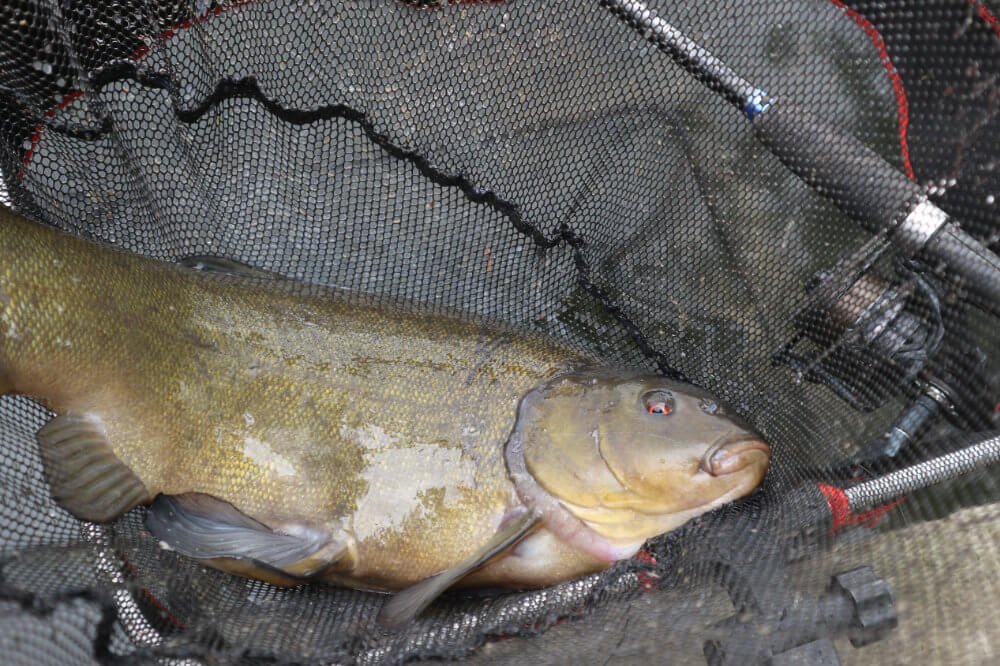
Pole Position
The pole comes into its own on weedy venues, allowing you to drop tackle into any clear holes you might find. In this instance, I was fishing right up inside the lock chamber on a disused canal, but experiencing problems when a lively tench charged back out into the much shallower main waterway. I had to try to tame the fish with more of my CP2000 Competition Pole in play than I would normally have at this stage. That was due to my float being set very deep for where I first hooked the fish, but it ended up charging about in just 3 feet of water. Long poles at least give you the chance to connect with tench in the first place in such weedy places, carefully lowering rigs into tight spots, so the hook bait doesn’t get covered or snagged up. It’s precision fishing, also exciting when something so powerful stretches the pole elastic to extreme limits.
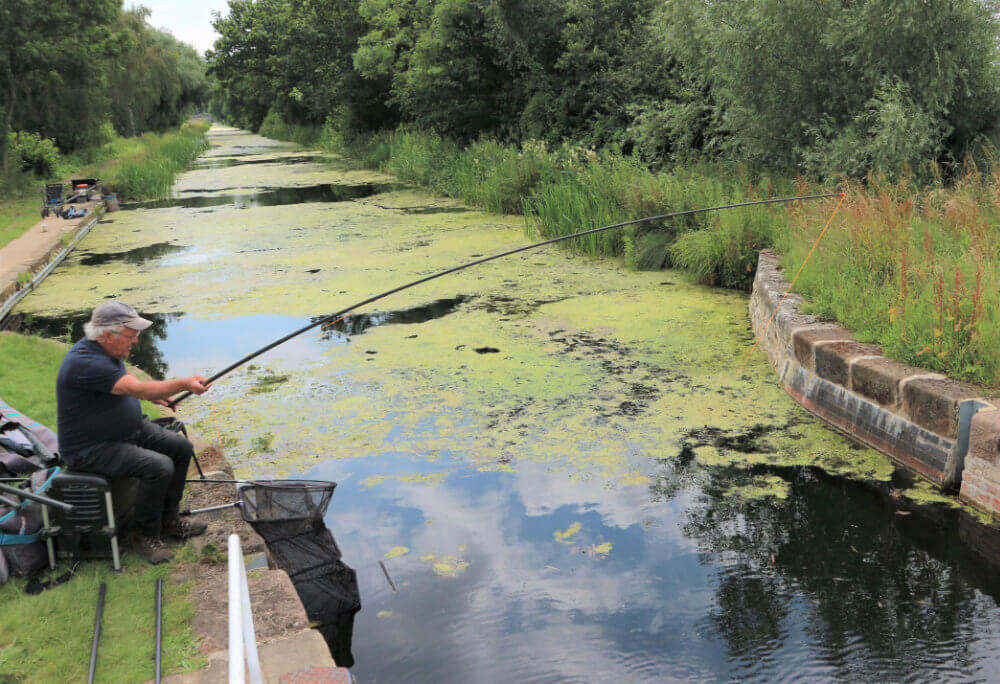
Fen Hotspot
Since moving to fenland I’ve discovered tench can turn up just about anywhere, although like many other venues, feature swims tend to hold bigger numbers. Such a spot was the big willow trees on the Chapel Farm match stretch at Benwick. The fish here are streetwise and never easy to catch, always presenting a proper challenge. On my first session in this peg I didn’t get it right, experiencing big fish fizzing bubbles over my line feed line, but not managing to connect with any. On a return visit, I fished more positively, adding pellets into my groundbait mix, along with the usual helpings of casters. On that occasion, I couldn’t get through small fish with maggots or casters on the hook, eventually switched to banded hard pellets. I did manage to catch a solitary tench, but got swamped out with good-sized bream, not that I was complaining!
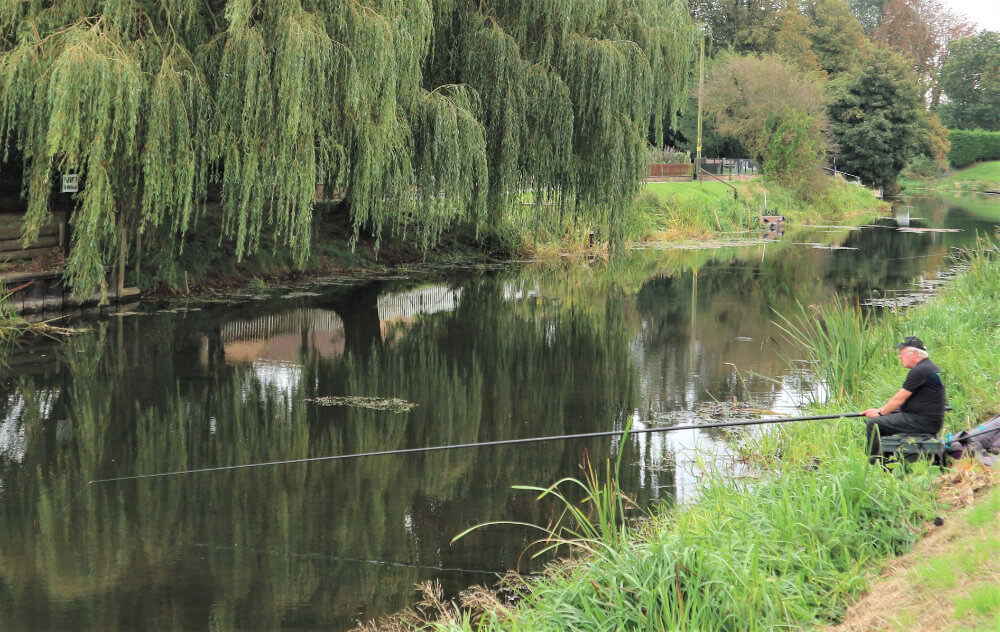
Another Go
My first fish-packed year in fenland passed by all too quickly, so it was twelve months later before I got back on the famous big willow pegs on the Old Nene at Benwick. It was sad finding the main features had been severely pollarded, so all the shady water had gone. I sat a little further along from the old hotspot, expecting that area to be full of sunken branches. Thankfully, fish were still in the vicinity, and it didn’t take long for bubblers to arrive over my groundbaited area. Soft silk weed was a problem, often coating hook baits and playing all sorts of tricks on how a pole float settled. Distracted, I missed a few fast and savage takes on double caster, also bumping out of a couple of good fish. I eventually managed to land a brace of tench and a stray bream, but had several more of the target species come off when they charged through weed.
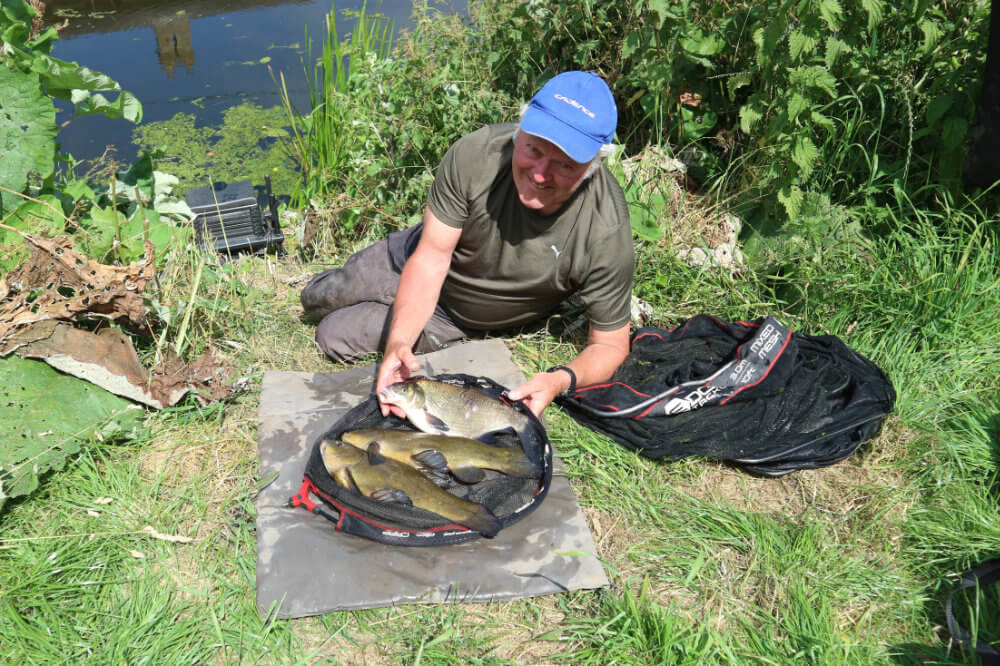
Whip Bonuses
Continuing to explore the network of Cambridgeshire drains, my Cadence CP200 Whip has experienced plenty of action. It often turned out to be the fastest way to amass big catches on so many prolific waters. One of the most effective routes has been to regularly feed small balls of groundbait, heavily laced with casters and micro pellets, switching between maggots, casters, and pellets on the hook. Soft expanders work well for skimmers, while hard banded feed pellets are better when trying to get through the bits, often resulting in better quality silvers and bonus tench. I’ve landed some amazing fish at varying lengths, relying solely on the fine carbon flick tip, which has coped admirably with plenty of bruising encounters. I’ve lost count of the number of big tench this favourite bit of kit, along with my CP800 Margin Pole, have landed.
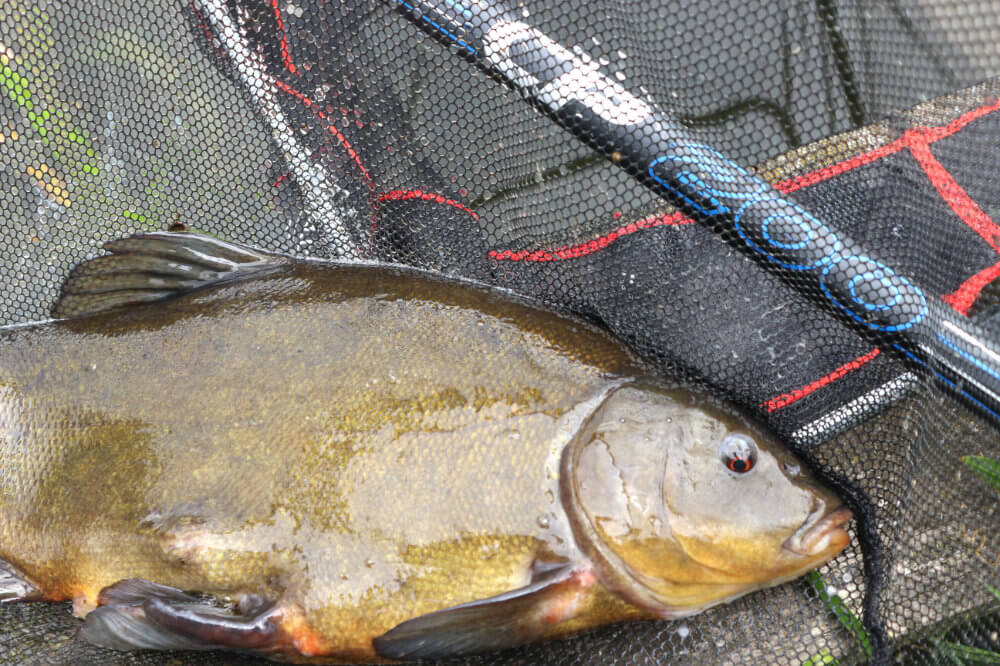
Holding On
It’s more sensible to tame wild tench on my 9m CP800 Margin Pole. I try to switch to it when bubblers arrive, but they don’t always give themselves away. They did on this occasion when working on a feature for Match Fishing Magazine, again on the Old River Nene at Benwick. This is the famous bridge peg on Nene Parade, where tench are never far away. These fish can drive you mad, frustratingly fizzing over your feed, while cleverly avoiding hook baits. But by constantly trying different things, it’s unusual not to eventually get attached to a big ‘un. With so much weed about, it’s better to get tench to the surface as quickly as you can, then worry about unshipping. I often do that one or two sections at a time, rather than risking getting weeded up. The disturbance only lasts a short time, better than losing such a hard-earned bonus.
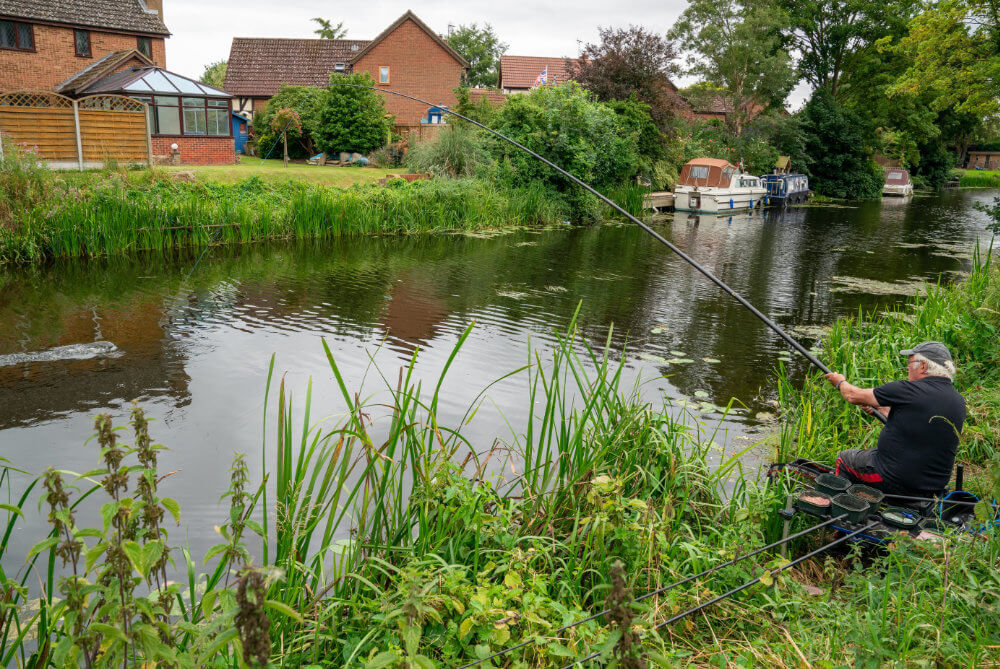
Balancing Act
Another fine tench ends up in my Edge Landing Net, using the CR10 12ft #3 Match Rod, caught from a gravel pit. It’s strange how angling takes you in circles. Some of my earliest tench fishing memories centred on pits, now I’ve discovered another and the buzz is just the same. There are so many interesting nooks and crannies to explore, with depths all over the place. Numerous features like gravel bars, semi-sunken islands, deeper channels, rush-lined bays and canal-like backwaters keep you guessing. It’s like working on a tricky cryptic puzzle, trying to find out where the tench are. In this case, I played another game, working through a big shoal of rudd with waggler tackle. Occasionally, this approach can prove tedious and go nowhere, but when the swim suddenly erupted with huge clouds of bubbles, it turned out all the effort was worth it.
